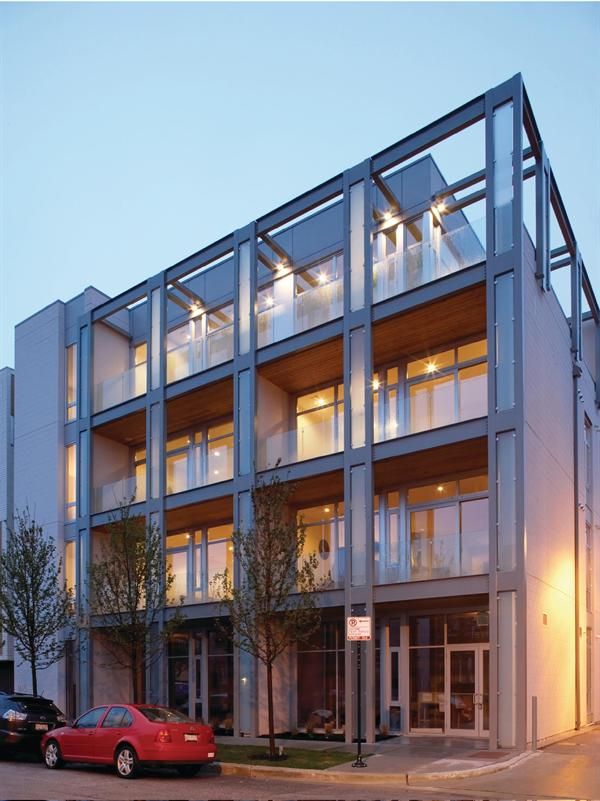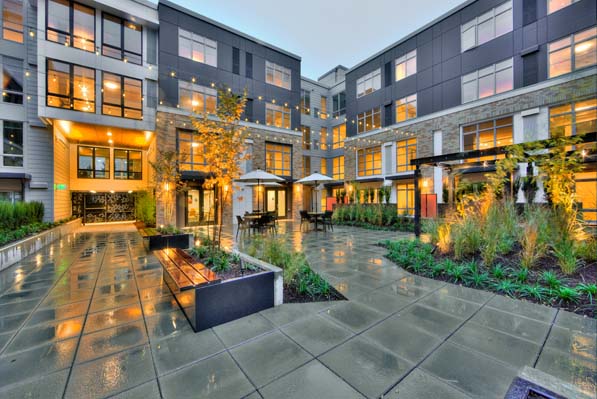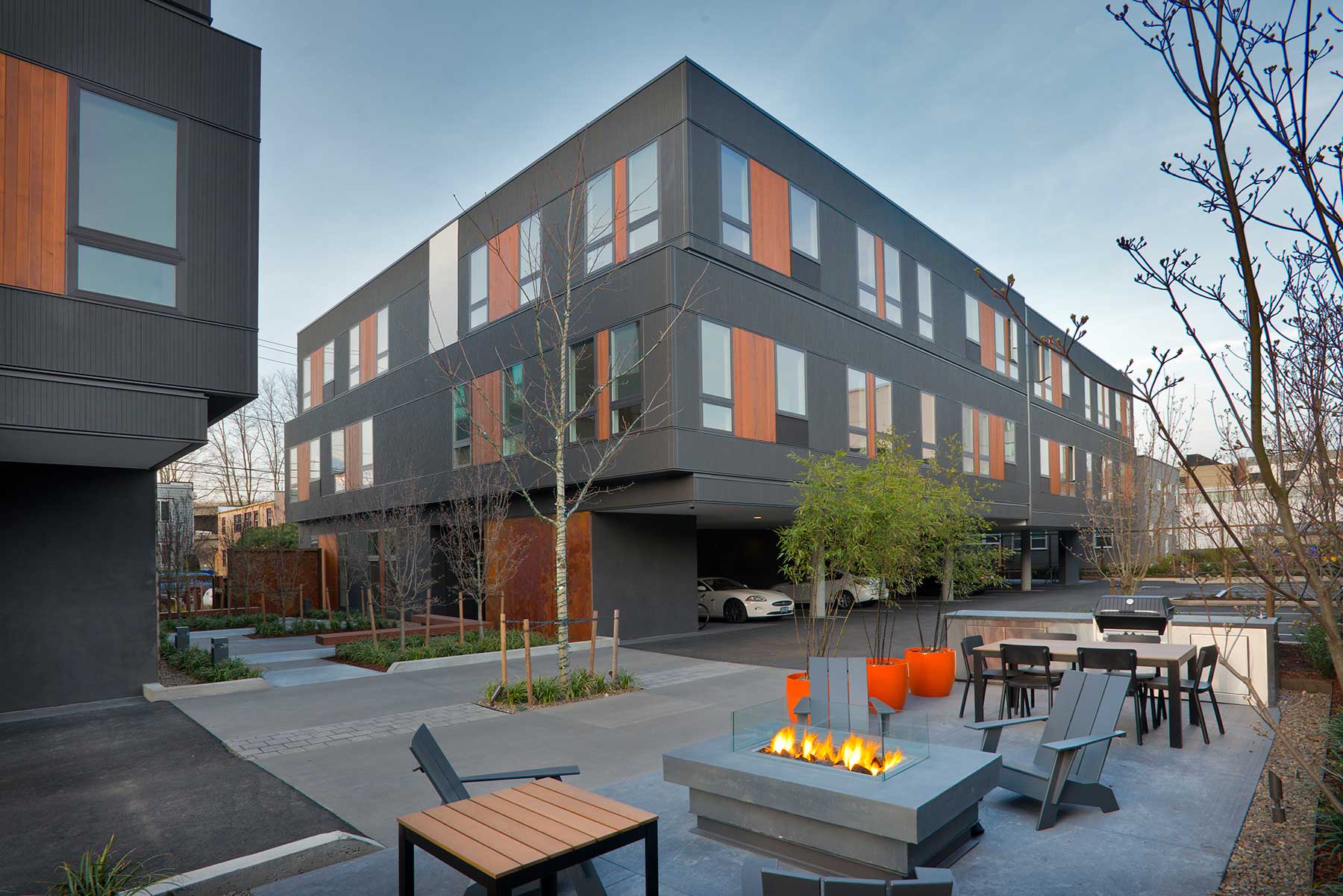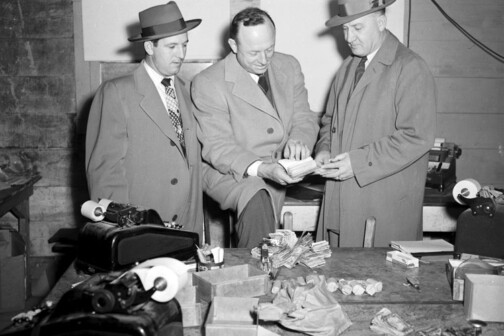For a minute, let’s ignore what I might charitably label misappropriations or misunderstandings of the role of the Urban Design Review Panel. Dictating or pearl clutching (and bizarre imaginings of) what businesses can or should locate and succeed in certain locations is not part of the job. Urban design is not a top down endeavor telling the market what to do. That fails. Ask Chinese Instant Cities. Ask Euclidean zoning. It makes for Potemkin Villages. What urban design does do is establish a framework for positive outcomes of commercial success, retail agglomeration, and beloved places to emerge. The remainder of this post will be exploring those dynamics.

Here is a link to Robert Wilonsky’s profile of Tracy Popken Springer. Tracy is a friend, neighbor, and incredible neighborhood advocate. She is absolutely right to like and want density while fearing and loathing bad architecture and big, soulless buildings from crowding out a diversity of building types, mixes of uses and scales, and everything else we love about authentic places. Tracy has a great little building that will continue to provide character, a human-scaled touch, and a sense of history as long as it stands.
With that said, I feel it’s necessary to provide some needed context to Robert’s framing of the story while outlining the underlying issues so we can stop with the hand-wringing and being propertly diagnosing the issues, discussing and analyzing those dynamics, and working to recalibrate the system proactively rather than reactively, which invariably leads to negative outcomes and unnecessary price increases and/or downward localized pressure on the real estate market (which can be your friend or enemy depending on how you harness it).
Gentrification is a problematic word. It has too many definitions to too many people to be useful and thus becomes unnecessarily inflammatory. One person’s displacement is another person’s investment. Investment is generally good, right? Depending on the outcome of course. Displacement sounds bad, but it also is more of a gray area. If displaced people end up in a better situation, that’s not bad right? If they are empowered by homeownership and selling and relocating is their decision and a price is agreed upon, who is to blame them?
Most of the properties in the Bishop Arts area were hispanic families that bought for $30k, sold for $300k, and upgraded their living situation. All of this is also an over-simplification without addressing rising property taxes, but that gets into the need for land value taxes or a splitting of land and improvement assessment to buffet this pressure while encouraging the private maximization of land within acceptable zoning densities and punishing the under-utilization of private land (we’re providing infrastructural connections and access to your site, creating value, and you’re gonna keep it as a parking lot?)
She, like me (I believe), is for investment in the neighborhood and new development. Density brings amenity. It also creates greater diversity of affordability (if done right). People like to say, “we don’t want uptown.” Or, “we don’t want those kinds of people,” as the thin veneer of xenophobia falls away (as Facebook comments invariably devolve). Density also means tax base, which means your potholes get filled, schools get more resources, and budgets get balanced. Don’t fight it. Shape it.
Many of us are working to try and shape that investment towards positive outcomes. We don’t like the sausage. However, the system is rigged against us. And by us, I mean all of us, Anywhere USA. Do we kvetch about the sausage? Not eat? Or, change the sausage making machinery?
There are three legs in the stool for dictating the shape and quality a real estate development project. These are Transportation framework, Zoning (and all things therein), and Finance. Yes, I’m mixing metaphors, but the three legged stool makes more sense than a three phase sausage making machine.
Perhaps the most important thing to understand is that capital always wants to follow the path of least resistance. While capital wants to efficiently allocate to market demands, this process is more quantitative than qualitative. Capital is focused on delivering the quantity and size of units the market (DFW populi) demands per each sub-market (Bishop Arts in this instance). It’s also very much not omniscient, which is where changing the machine (stool?) is important. You must design the machine so that the least common denominator can navigate it easily and deliver positive outcomes for capital, developer, and the neighborhood. Win-win-wins.
In that way, the real estate development and investment process is like a game of Plinko. You remember that game from The Price is Right!, right? Do they still air that show? Do they still play Plinko?
That resistance, the shape of the falling disk – the development process, is the three legged stool of Transportation, Zoning, and Finance. If the public sector, and an engaged private sector – vox populi, isn’t rigging the Plinko game for positive outcomes, 1) none of us our doing our jobs as citizens, voters, staff, and electeds, and 2) you are highly unlikely to get positive outcomes. And then we bitch.
Let’s go through the three legs of the stool within the context of Bishop Arts (but with understanding they can be applied globally), ok?
TRANSPORTATION FRAMEWORK. This, and its impact on real estate, is simultaneously easily understood and highly misunderstood. At the most basic level, transportation is the design of infrastructural movement networks, the design of the individual corridors nested within, and the accommodation of whatever transportation technologies apply at any given time. Hopefully, my ordering and syntax conveys that the network (street and block structure) is the singular most important thing. It is near timeless and can accommodate changing technologies.
Transportation shapes demand on a macro- and micro-level. On the macro level it provides the overall shape of a city. London is 12 million people that can fit inside Dallas County because the infrastructure is only extended so far. DFW metropolitan area is 7 million people over 16 counties because we’re apparently willing (or blissfully ignorant) to subsidize forever outward growth, car-dependence, pollution, congestion, and dozens of other negative externalities.
On the micro-, sub-market scale, the Bishop Arts area has a relatively good grid (parallel, cross-connectivity) allowing for many smaller scaled streets rather than few larger arterial streets. This disperses traffic, encourages pedestrian activity, and is overall far more efficient in the way that two two lane roads can move more cars than one four lane road (and herein lies the illogical nature of cities). It also now has a streetcar. It is this transportation framework that is sufficient to drive demand (a liquid), for the market to deliver built space via available financial mechanisms, to fit within the invisible volume that the zoning process allows.
It is the transportation framework that creates centers, nodes, edges, dead-ends, barriers, etc. Where a property is within that context shapes the value potential.
For Bishop Arts, all of those things are in place. Thus, development proposals arise and people want to be near it. People find value being around people-centric places. How dare they. So now let’s focus on the other two legs of the stool, zoning and finance.
ZONING. As I just mentioned, it’s best to understand zoning as an invisible vessel, a glass that holds the liquid of demand that fills as high as demand (and the size of the vessel detailed in the zoning) allows. The vessel is shaped by setbacks (how close to the property lines can you build), height (how tall you can build – particularly in relation to nearby buildings, especially single family), how much parking you have to provide per land use (which is for many other more detailed essays), and some combination of various metrics for density allowances such as Floor Area Ratio (FAR), basically how much leasable floor area you can build in relation to the land area.
Zoning also talks about acceptable land uses, but two-dimensional land use zoning is going the way of the Dodo, trending towards a more proscriptive approach, ie ‘You can put anything you want in there provided it isn’t a lead smelter or an adult bookstore.’ This is a positive trend since most land uses do not negatively impact surrounding properties the way that good/bad building form does, with the exception of lead smelters and adult bookstores, et al.
Around 2010, a very large area around Bishop Arts was completely rezoned towards something more like a Form-Based Code (-lite), with some controls over land use (commercial uses can only front on certain streets, etc.). Instead, the new zoning controls mostly by height. You can build up to 30′ here, 60′ over there, or 120′ somewhere else or whatever the specifics buried in the Planned Development District (PD for short – how Dallas does virtually all of its customized zoning). Other than that, it is virtually the Wild West over there, which can be good or bad.
As a designer or investor, I like codes with lots of flexibility to allow for creative design. But, BIG BUT, (remember that designing the machine for lowest common denominator) we must always ask, “what’s the worst someone can do by right?” This is how good zoning codes are written, flexible allowing for creativity in high level design, but very restrictive at the bottom end. Make the path of least resistance point toward the best outcomes that the market will realistically bear (now or as soon as you want investment in an area – if you do at all).
Here is one of the issues we face (and it is related to the financial component, but we will get to that): most of the designs we are seeing proposed are aping a Bishop Arts (historically Dallas Land & Loan) that never existed. Warehouses? No. It was a streetcar suburb. Today, the area is populated by many professionals in the creative industry. I personally would like to see designers and developers experiment a little more rather than Disney-fy a faux history. But that’s subjective and this piece is about creating an objective framework where value, care, and attention to detail warrant higher levels of site planning and design. And whimsy. Because who cares. It’s all an experiment anyway.
I’m seeing a lot of creative mid-scale projects emanating in cities like Seattle, Philly, LA, etc., where a design scene is present and the range of scale of design firms is appropriate for the range of product types. However, it is delivering the range of housing product types within the current real estate climate that is the primary issue. So forget everything else I’ve written to this point, it’s what follows is all that matters. It’s why when we’re quibbling over subjective details and architectural styles, we only end up driving up housing costs. The law of unintended consequences.
FINANCE. The game is currently rigged only to deliver large-scale projects. That means 200- to 250-unit apartments in infill locations and large masterplanned (soulless) masterplanned communities out in exurbia world. These are what is getting financed at the moment. A great time for architects to have jobs. It’s a terrible time for architecture. Architects either aren’t working on the masterplanned communities because the home plans are copy/pasted or they’re skinning a pro forma to ‘fit within the warehouse-y character of the neighborhood’ even when there are no warehouses and never were.
Big apartments and big masterplanned communities deliver a LOT of product in two narrow market types. Meaning, there are large segments of the market not being met. The middle is missing. What we urbanists mean by the #MissingMiddle is the range of housing types between single family and 200+ apartment projects, the duplexes, fourplexes, eight-plexes, townhomes, granny flats or ‘laneway houses’ as Vancouver calls them (the loft apartments over garages off the back alley) that deliver a ‘gentle density.’ The good kind of density, that blends with scale
However, we can’t wish for these types of buildings to suddenly appear. It is incredibly difficult to get them financed.
There are a couple of reasons for the difficulty.
Not worth the time. Small projects take the same amount of time and brain damage moving through the development and approval process that big projects do. In fact, big projects have an advantage because they’ll pay for expedited building review. Big projects have higher profit margins and can be delivered just as quickly. Which would you do if you had the access to capital and debt? Which leads me to…
Risk averse lenders. Despite this time of explosive growth in the region (and even back into Dallas for once!), everybody is waiting for the other shoe to drop. Everything is just a little *too* hot in the development industry right now. Or so seems to be the collective sentiment. And maybe that’s right. Even though there seem to be no underlying indicators of a slowdown, lenders are gun shy. Why not? Dallas is notorious for booms and busts.
While placing a restrictor plate on willy nilly lending, this has some negative (or not, in their minds) outcomes. If they don’t know you, haven’t worked with you, or you don’t have a long track record, you probably aren’t getting lending right now. So only the big developers are cutting loose on projects. Or, highly capitalized individuals willing to take on risk or act as the bank themselves armed with frightening term sheets. This means, also big boys doing big projects. Nobody has the time to waste on narrow margin, high brain damage, thoughtful, context sensitive projects. This is bad. This is reality. The great thing about reality is it can be altered.
Since it is difficult for smaller investors and smaller scaled developers to get into the market place (especially with where land prices are), it means we aren’t getting the kind of authentic development projects that we would like to see. Instead, we are getting product. A product (big developments at high rental rates) that are scrambling for an increasingly shallow market segment within a very deep housing market. If nothing else, that should be the sign for reform. Lest we miss this market cycle and the opportunity it presents to transform and revitalize Dallas neighborhoods as highly livable, walkable, lovable places worth investing in. Imagine, a city invested in and built by the many rather than the few.
Conservative Capital. One of my go to phrases is that capital oozes. It doesn’t jump. The reason? It follows success and other profits. Turning disinvestment around takes a Herculean effort, like the thirty years since Jim Lake Sr decided to invest in Bishop Arts and the beginnings of what made it today.
Same with product type. Lenders provide financing to projects that can point to a comparable development in the same sub-market. These apartments in this area are going for this, we think we can get that. These houses are going for this, we think we can get that. Here’s the proof. Doing something different gives everyone a big frowny emoji. Therefore, we must wait until a big project comes along and some people are willing to take on a lot of risk. In other words, we have to work to write down risk and streamline the development process for delivering interesting, context sensitive density.
There is some good news.
FHA backed loans. I’ve been told that something like 90% of all housing stock is financed with Federal Housing Administration secured loans. The problem is these securities come with strings, which one would think is good, except they’re not when they limit the kind of product that can be delivered. Until just this past year, any FHA backed loan for a housing development could only have 10% of its total square footage dedicated to a use other than housing. Meaning, if you want to do a mixed-use development (yay everybody loves those) and you want to provide space for the butcher, the baker, and the candlestick maker in the ground floor (hat tip: Monte Anderson) in 20,000 square feet, you need to provide 200,000 square feet of housing. You can see how this multiplier escalates the size of a project quickly.
Oh yes, there was good news. This requirement changed this year to 25% so you can now to a ground floor business with say three units above and it provides the flexibility to work on small and irregular infill lots. That’s a big deal for fine-grained urban infill, but it doesn’t address all of the other issues above, which remain as barriers to the full array of development product types that meet what the full spectrum of choices the market desires.
If we want a much richer experience in our neighborhoods (rather than the Soviet-style housing projects, hat tip The Observer) and the greater range of affordability levels that a range of housing types instills, we should be working to empower the small scale investors, developers, and designers through zoning, building review process, and financial incentives to be the worker bees throughout Dallas, revitalizing all of our neighborhoods in a manner we don’t have to all love each other’s neighborhoods, but just our own. That’s how neighborhoods self-select and cities morph from viable to livable to lovable.













